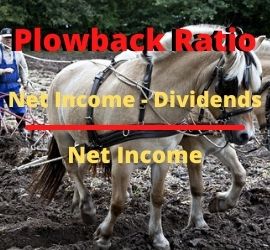What are Cyclical Stocks?
 Cyclical stocks tend to closely follow the overall economy, rising swiftly during economic expansions and falling sharply during recessions.
Cyclical stocks tend to closely follow the overall economy, rising swiftly during economic expansions and falling sharply during recessions.
Cyclical stocks have a business cycle that is influenced by macroeconomic or systematic fluctuations in the overall economy. These equities are noted for tracking an economy’s expansion, peak, recession, and recovery. The majority of cyclical equities involve companies that sell consumer discretionary items. Customers buy more discretionary items during a boom but spend less on them during a downturn.
Automobile manufacturers, airlines, furniture retailers, clothes stores, hotels, and restaurants are examples of companies with cyclical stocks. People can afford to buy new automobiles, upgrade their homes, shop, and vacation while the economy is doing well. When the economy is doing poorly, these are some of the first things consumers reduce. If a recession is severe enough, cyclical stocks can become nearly worthless and businesses can go bankrupt.
Cyclical stocks rise and fall in tandem with the business cycle. Because of the apparent regularity of the movement of these equities’ values, some investors attempt to time the market. They buy the shares at the bottom of the business cycle and sell them at the top. Investors should exercise prudence when it comes to the weight of cyclical equities in their portfolios at any particular moment. While this is true, it does not mean that investors should avoid these equities entirely. In other words, investors should use caution when investing in cyclical stocks, but they should not shun them entirely.
Examples of Cyclical Industries
It’s not practical to list every cyclical industry. However, here are eight prominent and easy-to-understand examples. They illustrate some of the sectors prone to cyclicality:
- Airlines: During strong economies, both individuals and businesses tend to be more willing and able to spend money on airline tickets than during lean times.
- Hotels: Like airlines, hotels depend on individuals and businesses spending money on travel.
- Retail: During times of economic contraction, people tend to spend less on discretionary retail goods. However, retailers primarily selling things that people need are not typically as cyclical, especially when they prioritize offering discounts.
- Restaurants: In poor economies, people eat at home more often than they do during prosperous times, and restaurant stocks often suffer as a result.
- Automakers: Consumers tend to hang on to their vehicles longer when recessions hit and are more inclined to buy new vehicles in prosperous times, so automaker stocks tend to be quite cyclical.
- Technology: Most (but not all) tech stocks are cyclical. Individuals and businesses are less inclined to spend money on the latest technologies and electronic devices during recessions.
- Banks: In a recession, the profitability of banks often declines. Recessions reduce demand for banking products, including mortgages, auto loans, and credit cards, and more consumers who already have loans struggle to pay their debts. In addition, interest rates tend to fall before and during recessions, causing bank profit margins to contract.
- Manufacturing: In tough times, as individuals and businesses spend less on pretty much everything, companies that manufacture physical products tend to experience plunging demand. (Source: fool.com)
Cyclical Stocks vs. Noncyclical
The performance of cyclical stocks tends to correlate with the economy. Noncyclical stocks tend to perform well regardless of the economic trend. Even when there’s a slowdown in the economy.
- Cyclical stocks – are thought to be more volatile than noncyclical or defensive companies, which tend to be more stable during economic downturns. They do, however, have a higher potential for growth because they beat the market during times of economic boom. Investors looking for long-term growth with controlled volatility typically balance their portfolios with a mix of cyclical and conservative equities. Investors typically pick exchange-traded funds (ETFs) to obtain exposure to cyclical stocks while the economic cycle is increasing.
- Noncyclical stocks – These stocks tend to outperform the market regardless of economic trends. Even when the economy is slowing. Noncyclical stocks are sometimes referred to as defensive stocks. These stocks are in the consumer staples sector. For example, goods and services that people continue to buy across all types of business cycles, including economic downturns. Companies dealing with food, energy, and water are examples of noncyclical stocks.
Exchange-traded funds (ETFs) are a great option to obtain exposure to cyclical stocks while the economic cycle is increasing. Also, adding noncyclical stocks to a portfolio can be a great strategy for investors. it helps hedge against losses sustained from cyclical companies during an economic slowdown. Investors should be cautious when investing in cyclical stocks. However, this is not a reason to avoid them entirely.
Cyclical Stocks – Durables, Nondurables, and Services
Cyclical stocks are often further categorized as durables, nondurables, and services.
- Durable goods companies – are involved in the production or distribution of physical commodities with a life expectancy of more than three years. Automobile manufacturers such as General Motors, appliance manufacturers such as Panasonic, and furniture manufacturers such as IKEA also participate in this category. Durable goods orders are a leading indicator of future economic performance. When durable goods orders rise in a given month, it may be an indication of better economic activity in the months ahead.
- Nondurable goods companies – make or distribute soft items with a life expectancy of fewer than three years. Reebok, a sports gear maker, and retail establishments such as L Brands and Kohl’s are examples of companies that engage in this area.
- Services – are cyclical stocks that do not create or distribute real items. Instead, they offer services that help clients with travel, entertainment, and other leisure activities. Walt Disney (DIS) is one of the most well-known corporations in this industry. Companies that operate in the emerging digital sector of streaming media, such as Amazon Prime, are also included in this category.
Examples of Cyclical Stocks
- JPMorgan Chase (NYSE: JPM)
- Apple (NASDAQ: AAPL)
- General Motors (NYSE: GM)
- Boeing (NYSE: BA)
- Texas Roadhouse (NASDAQ: TXRH) (Source: fool.com)
Are Cyclical Stocks Risky?
All common stock investment entails some level of risk. Stock investment capital is not guaranteed. When choosing whether to buy cyclical equities, the best place to start is by looking at where the economy is in the current cycle.
- Market timing – For example, consider an investor who can endure a high level of volatility and has a buy-and-hold mindset. That investor may explore purchasing cyclical stocks at a cheaper price during an economic downturn. Just be sure the downturn isn’t just getting started. A word of caution, this method does not always work. Timing the markets is very difficult. If investors do not time their buy well, it may take years of ups and downs before the stock recovers.
- Volatility – It’s also critical to understand that cyclical equities can be quite volatile. They tend to follow the overall economy. When economic news is mixed, cyclical stocks may move dramatically up and down in a short amount of time. Timing is always important with stocks. But, it is even more important with cyclical stocks. Cyclical stocks can fall during recessions or even in anticipation of one.
Investors who aren’t prepared for a downturn may find themselves holding the bag after everyone else has sold. Buying a cyclical stock just as the economy begins to deteriorate is not always a wise idea. As with any stock, there is always the danger that it will lose value after you purchase it. If a firm begins to struggle or just loses popularity with investors, its stock price might plummet, resulting in investment losses.
Up Next: How to Calculate Percentage Increase, Decrease, or Difference
 How to calculate percentage increase shows the amount of increase from an original number to a larger number as a percentage or parts per 100.
How to calculate percentage increase shows the amount of increase from an original number to a larger number as a percentage or parts per 100.
Percentage change is a straightforward mathematical concept. It expresses the amount of change over time as a percentage. It is used in finance for a variety of applications. Investors use it to depict the price change of a stock, security, or another asset. The percentage change formula can be used to track the prices of individual stocks as well as overall market indices. It is also useful for comparing the values of various international currencies.
The concept of percentage increase is simply the amount from the original to the final figure expressed in terms of 100 parts of the original. A 10% increase means that if the original value is divided into 100 parts, the value has increased by an additional 10 parts. So, if the initial value rose by 20%, the value would rise by 20 for every 100 units, 40 for every 200 units, and so on.




